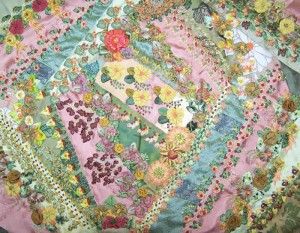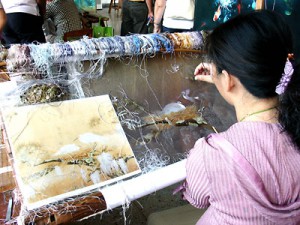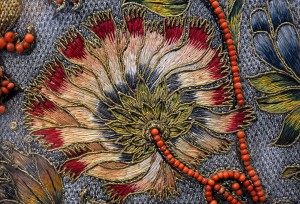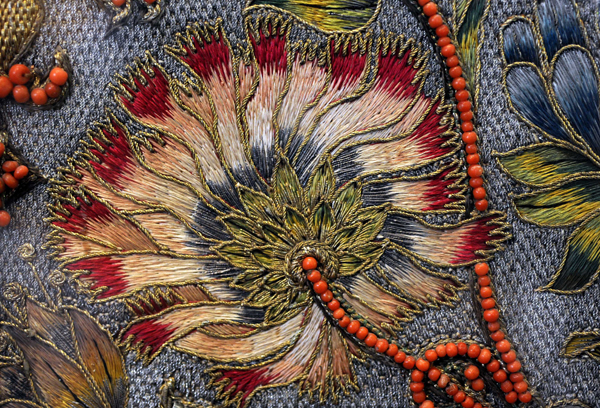
Silk Embroidery
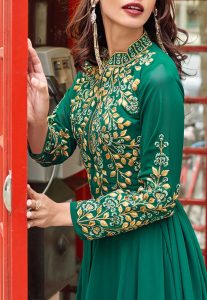
Resham Embroidery
Silk Embroidery has been one of the most important and eminent part of the fashion and textile industry. This craftsmanship of drawing patterns on fabrics is centuries’ old, evident in many countries across the globe. Silk is one of the finest fabrics available in the world. Embroidery done using the silk thread was an ancient Chinese art, but is now rampant all over the world, particularly India.
Origin and History
The origin of Silk Embroidery goes back to China and if we start counting, it dates back to over 2500 years. The silk embroidery is one such handicraft that has been cultured and endowed through ages. People in Ancient China have given this art form life, name and a social standing. The Chinese have brought this art to the homes of people and till date, it is followed vividly in China.
The detailing in the embroidery and needle, which produces intricate images are solely the traditional features and stories of the kings and queens of that era. Similarly, in India, Silk embroidery was patronized by the Mughals and royal Kings, and was heavily adorned on their robes or long dresses. After China, India became the second home for Silk production, which is largely practiced and has worldwide acclaim as well.
Style & Attire
Fabrics and costumes with silk embroidery are worn extensively in the south East Asian countries especially India, China, Japan and Korea. This embroidery is used on clothing like evening dresses or the traditional outfits. Silk embroidered scarves, shawls and ribbons are used worldwide with various outfits as Accessories. In India, silk embroidery has its own standing. A lot of traditional Indian outfits are inspired and fabricated with silk embroidery and are then worn by women all over the world.
Innovations
The culture of silk weaving and embroidery using silk threads is changing with the improvised trending in the fashion industry, brocades and crepes to name a few. The use of silk threads and weaving also plays a crucial role in creating motifs and patterns on to cloth to be further used as a painting.
A lot of artists and weavers are reviving their cultural stories by weaving them on cloth and then framing them as an artifact. Several home décor bits and pieces and home accessories such as quilts and pillowcases are adorned with the silk thread and embroidery and are seen in the market today.
Global Influence
This art and craftsmanship have a major global impact. A large part of the south East Asian countries economy depends upon this handicraft. The silk embroidered costumes, fabrics and textiles are exported all over the world and contribute to the upcoming market trends and fashion industry. The Chinese dragon, which is one of the most famous designs of silk embroidery, is used by people all over the world in various costumes and attires.
Interesting Facts and Comparisons
- Silk weaving and embroidery is a gift from Ancient Chinese people to today’s world
- Chinese dragon is one of the most famous pattern/ design used in silk embroidery
Categories: Motifs & Embroideries

